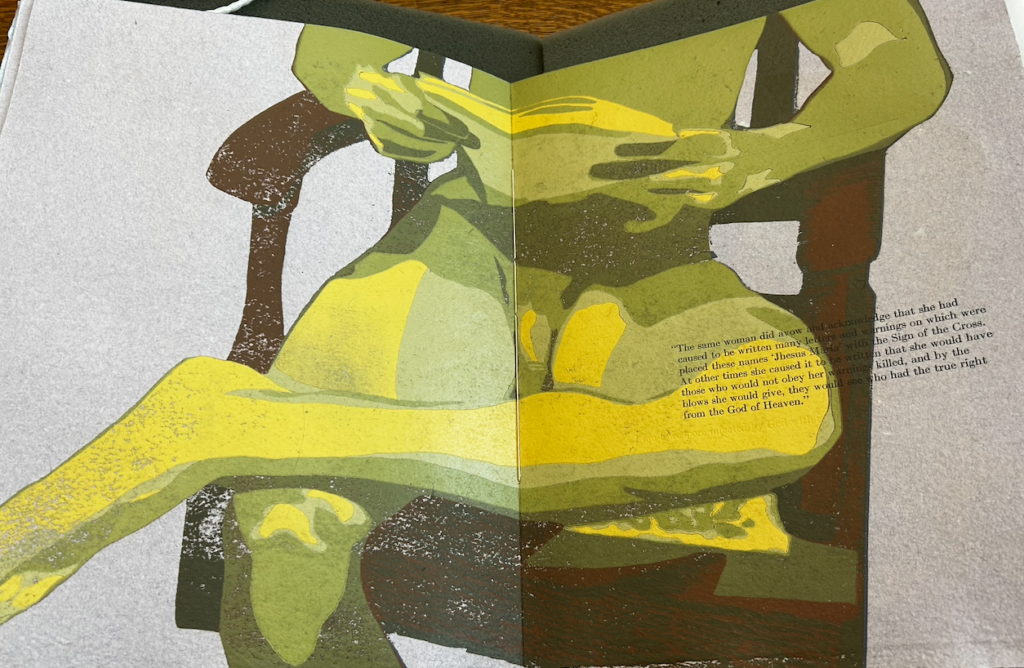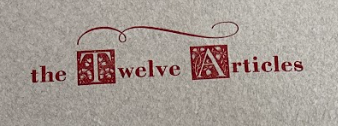
At first, it was difficult to distinguish the role of the illustrations in “The Twelve Articles.” As I flipped through the book, I noticed that each page had an illustration of a masculine body. On most pages, the illustration is simply just the figure engaging in some type of activity like buttoning a shirt, or some form of motion, like falling. On some pages, the figure is interacting with an object or sitting on a piece of furniture.
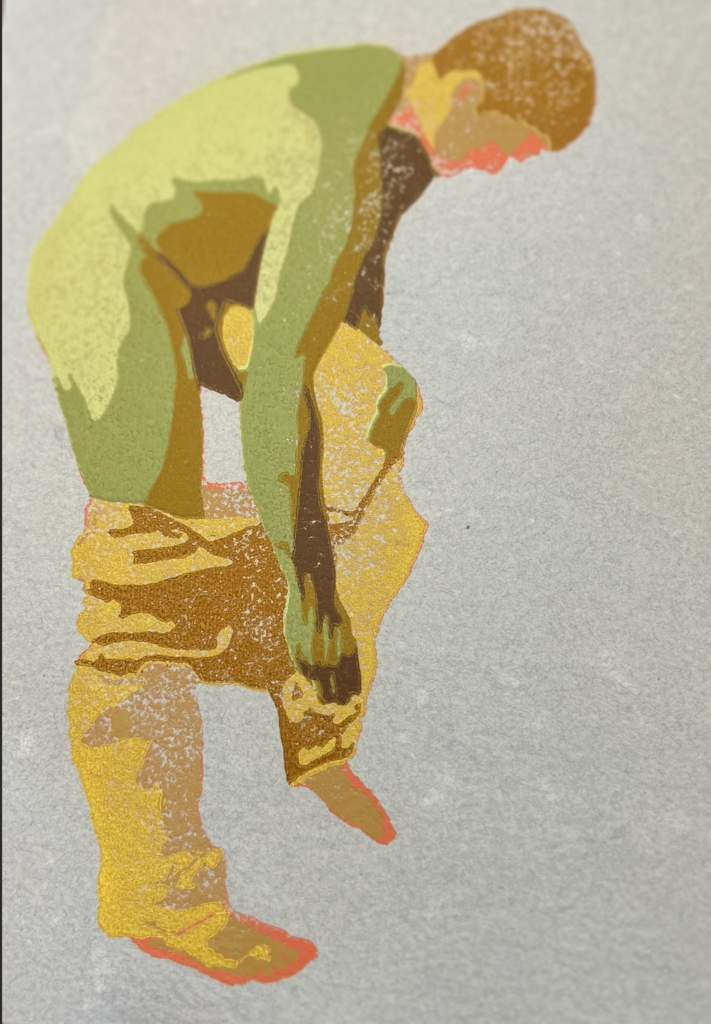
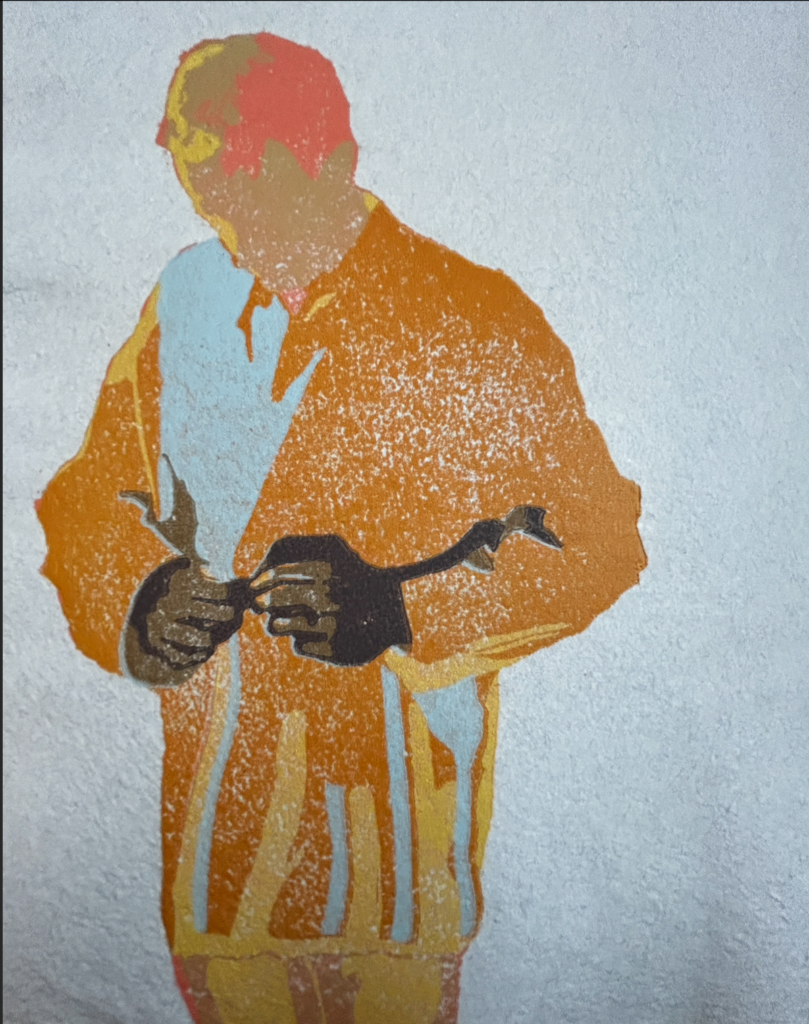
Without reading the text, it’s hard to put together a narrative with just the imagery. Yet, pairing the illustration with the text we can see that this is in fact a narrative illustration. One place where this is really explicit is Article One. In the text, it says, “To hide the most obvious gift from God, I bound my body with duct tape.” The image paired with the text block on this page shows a figure who appears to be wrapping themselves with some type of material. It’s undeniable that the image and that line of text are telling the reader and viewer the same thing.
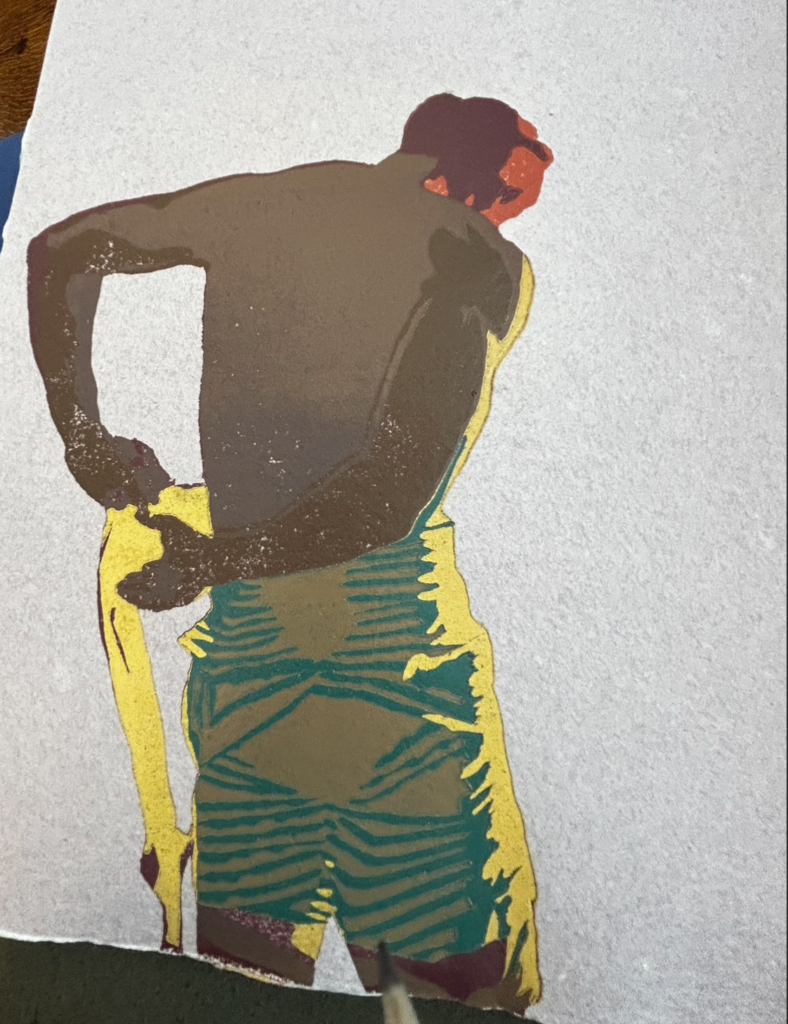
In previous blog posts, I analyzed the type of block print style used to print the images and in the Colophon at the end of the book, it is confirmed that all illustrations are created using a reduction style woodblock print on torn cloth paper. As a printmaker myself, I understand the amount of elbow grease and finesse that goes into carving and printing a reduction print. I personally don’t enjoy participating in the reduction print process; however, the result is truly admirable and beautiful! There is a level of ambiguity to these prints because fine details that are often seen in portraits, like facial features are reduced to organic shape and light or shadow. I think the lack of these details is intentional. The artist and author could have included them with a final layer of block print, but it would have changed the way the image reads. This was a creative choice to be ambiguous about the identity of this character and I think that is done because although the narrative in this book is about one man and his relationship with AIDS, the autoimmune illness was a reality for many people especially men and for a time in history, it was not a unique experience.
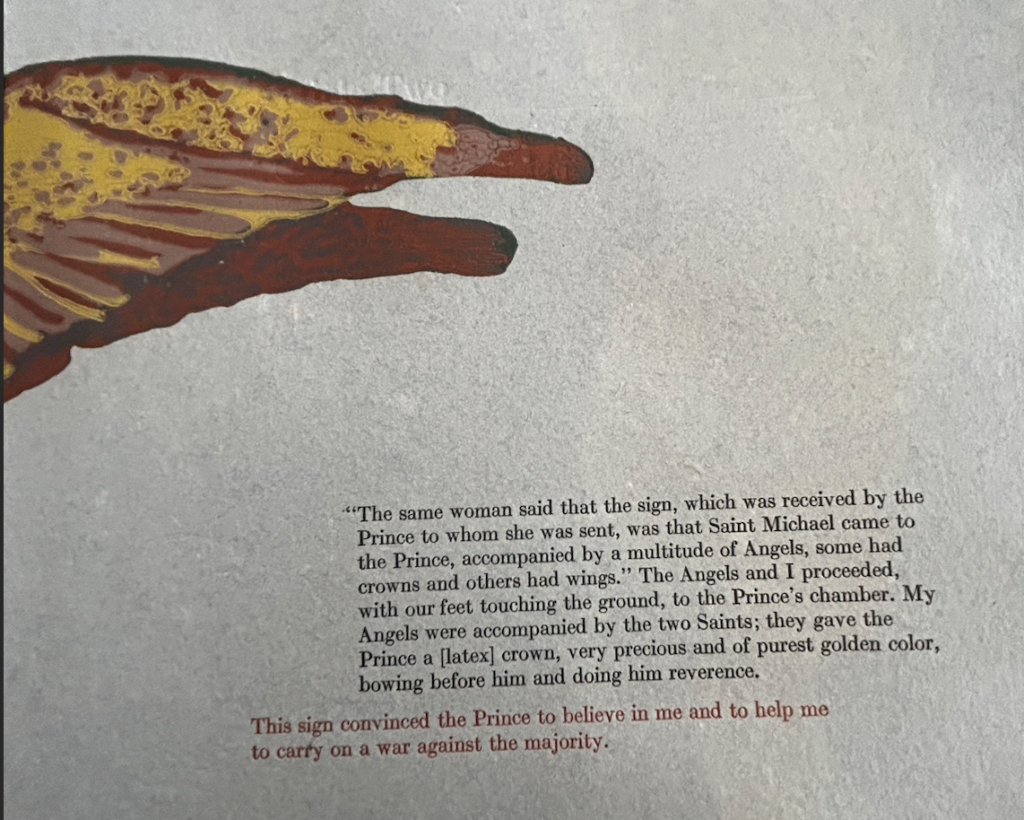
One print that really sticks for me is in Article Two. The print is of a male figure with wings. This illustration is rather large and it takes up most of the left page, and the wings spread off the page and onto the next, leading the viewer’s eye to the text block. In this text block, the author mentions angels, some with crowns and some with wings, as we see in the print. This is one of the few prints that take up space on both pages.

Article Six, which I’ve discussed previously regarding the hidden text, also has a really striking double-page print. In this picture, there is a figure seated in a chair with a book and he is nude. The figure is printed with layers of green ink in various shades and the chair is printed with layers of green and brown ink. You can really see the touch of the artist and the nature of the material by the way that the paper pokes through some of the layers of ink. This print takes over both pages and continues off of the top and bottom of the page, implying the continuation of the figure. This indicates that the artist just wants us to focus on the area of the figure reading a book. The text on this page is partially printed over the illustration, which creates an interesting relationship between text and image as they compete for the reader’s attention.
After reading the text block, I found that this is a quote from “The Twelve Articles of Accusation of Joan of Arc.” The relationship between the image and the text on this page exemplifies the idea that the figure on the page who is holding the book is also reading “The Twelve Articles of Accusation of Joan of Arc,” and the artist is remediating her story, through the story of John de Vaillantcouer, who is the main character in the narrative of this text. So in a sense, I, the reader am reading about John De Vaillantcouer, who is reading The Accusation of Joan of Arc and relating her trials to his own challenges.
